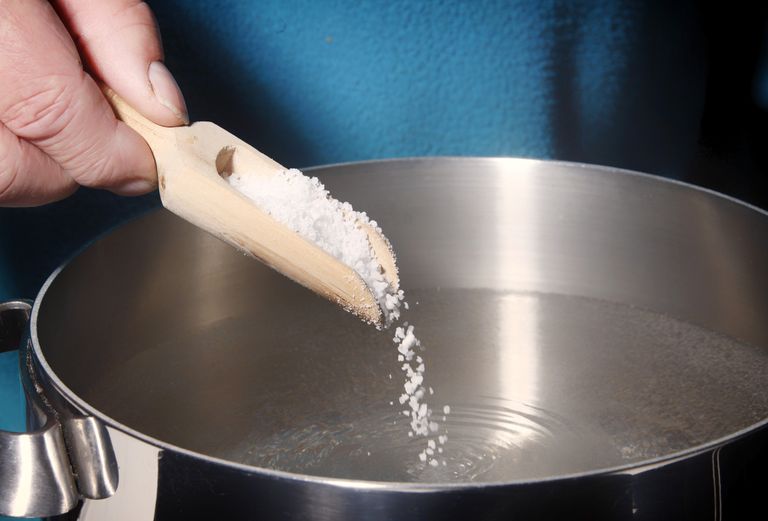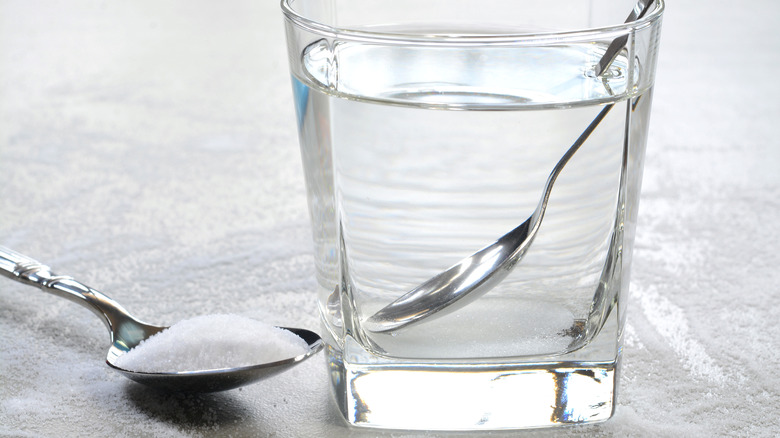Have you ever heard of the salt water flush for weight loss? It’s a detox method that’s been gaining popularity, particularly on social media and wellness platforms. Some claim that drinking salt water can help cleanse your system, reduce bloating, and even aid in weight loss. But does it really work, or is it just another wellness trend?
In this article, we’ll dive deep into the salt water flush, how it’s supposed to work, and whether it’s truly effective for weight loss. Let’s explore the science, the risks, and the potential benefits to help you make an informed decision about whether this technique is right for your weight loss journey.

What is the Salt Water Flush?
The salt water flush, often called a “salt water cleanse,” involves drinking a mixture of warm water and non-iodized salt. This method is said to have a detoxifying effect, helping the body eliminate waste, improve digestion, and reduce bloating. It’s popular as a way to clean out the colon, promote hydration, and kickstart the digestive system.
Though it’s frequently touted for weight loss, the salt water flush isn’t a magic weight-loss solution. Instead, it primarily targets temporary weight loss through the elimination of excess water and waste, rather than fat. The idea is that the salt helps the body expel toxins, and by doing so, it may lead to reduced bloating, improved digestion, and overall lighter feeling.
How Does the Salt Water Flush Work for Weight Loss?
Salt water flushes are known for their laxative effect. The salt draws water into your intestines, triggering bowel movements and helping to clear out any waste that might be sitting in your digestive system. While the flush can cause temporary weight loss due to the removal of water and waste, it doesn’t directly target fat. However, there are several reasons why people turn to the salt water flush for weight loss:
1. Reduces Water Retention
Excess sodium in the body can cause water retention, leading to bloating and puffiness. However, when you drink a salt water flush, the body expels excess fluids, which can lead to temporary weight loss. The removal of retained water can help reduce bloating, making you feel lighter and more comfortable.
2. Promotes Hydration
Hydration is crucial for weight loss, and drinking water with salt can improve the body’s ability to retain and use water effectively. When you’re well-hydrated, your metabolism works more efficiently, supporting fat-burning processes. Proper hydration also helps prevent overeating, as thirst is often mistaken for hunger.
3. Supports Digestion and Detoxification
Salt water flushes are sometimes used to stimulate digestion and encourage regular bowel movements. Regular bowel movements are essential for weight management because they help eliminate toxins and waste. Some people find that a salt water flush helps their digestive system run more smoothly, leading to better nutrient absorption and less bloating.
4. Improves Gut Health
Salt water can have a positive impact on gut health by promoting the movement of waste through the colon. A healthy gut is essential for weight loss, as it helps regulate metabolism and manage hunger hormones. By promoting a clean, functioning gut, a salt water flush may indirectly support weight loss.
5. Boosts Energy
When your body is detoxified and properly hydrated, you often feel more energized. This can lead to increased physical activity, which is vital for burning calories and losing weight. Feeling lighter and more comfortable in your body can motivate you to stay active and stick to a healthier routine.
How to Do the Salt Water Flush for Weight Loss
If you’re curious about trying the salt water flush, here’s how you can prepare it:
Salt Water Flush Recipe:
Ingredients:
-
1–2 teaspoons of non-iodized salt (Himalayan pink salt or sea salt)
-
1 liter (4 cups) of warm, filtered water
Instructions:
-
Boil the water and let it cool until it’s warm but not too hot to drink.
-
Add 1–2 teaspoons of non-iodized salt to the water and stir until fully dissolved.
-
Drink the entire liter of salt water on an empty stomach, ideally first thing in the morning.
-
Wait for about 30 minutes to an hour. You should experience a bowel movement within this time.
How Often Should You Do a Salt Water Flush?
The salt water flush is typically done as a one-time cleanse, often to kickstart a detox regimen. While some people may do the flush once a week or a few times a month, it’s not recommended to use this method regularly, as overuse of salt can lead to dehydration or electrolyte imbalances. It’s essential to listen to your body and consult a healthcare professional if you plan to incorporate salt water flushes into your routine.

Is the Salt Water Flush Safe for Weight Loss?
While the salt water flush can be safe when done occasionally and in moderation, it’s important to be aware of the risks associated with excessive salt consumption. Drinking too much salt can lead to dehydration, high blood pressure, and other health complications. People with heart disease, kidney issues, or high blood pressure should avoid this method or consult with a doctor before trying it.
Additionally, the weight loss from a salt water flush is primarily due to water loss, not fat loss. This means any weight you lose from the flush will likely return once you rehydrate and restore fluid balance in your body.
Benefits of Salt Water Flush for Weight Loss
While it’s not a long-term solution for fat loss, a salt water flush may offer some temporary benefits, including:
-
Reduced bloating and puffiness
-
Improved digestion and regularity
-
Boosted hydration
-
A feeling of lightness and energy
These benefits can help you feel more confident and motivated as you continue your weight loss journey. However, to achieve sustainable weight loss, it’s important to incorporate a balanced diet and regular exercise into your routine.
FAQ: Salt Water Flush for Weight Loss
1. Does the salt water flush help with weight loss?
The salt water flush can help with temporary weight loss due to the removal of water and waste. However, it does not target fat loss. The weight loss is primarily from fluid loss, not fat reduction.
2. How much salt should I use for a salt water flush?
Use 1–2 teaspoons of non-iodized salt (such as Himalayan pink salt or sea salt) per liter (4 cups) of warm water. Stir until fully dissolved, and drink it all on an empty stomach.
3. How often can I do a salt water flush?
It’s generally safe to do a salt water flush occasionally, such as once a week or a few times a month. Avoid using it too frequently to prevent dehydration or electrolyte imbalances.
4. Is the salt water flush effective for long-term weight loss?
No, the salt water flush is not a long-term weight loss solution. It can help with temporary weight loss from water retention, but true fat loss requires a balanced diet, exercise, and healthy lifestyle.
5. Can a salt water flush be harmful?
When done occasionally and in moderation, a salt water flush is generally safe. However, excessive salt consumption can lead to dehydration, high blood pressure, and kidney problems. It’s important to use salt water flushes sparingly.
6. Can I use the salt water flush for detox?
Yes, many people use the salt water flush as a detox method to cleanse the colon and improve digestion. However, it’s not a replacement for a healthy, balanced diet and regular exercise.
Use the Salt Water Flush as Part of a Balanced Weight Loss Plan
The salt water flush can be a useful tool for reducing bloating, improving digestion, and providing a temporary weight loss boost. However, it should not be relied upon as a sole method for fat loss. For sustainable weight loss, focus on a combination of healthy eating, regular exercise, and smart lifestyle choices.
While the salt water flush can help you feel lighter and more energized, remember that true weight loss comes from creating a caloric deficit through a balanced diet and exercise. Use the salt water flush occasionally to jumpstart your weight loss journey, but focus on healthy, long-term habits for lasting results.